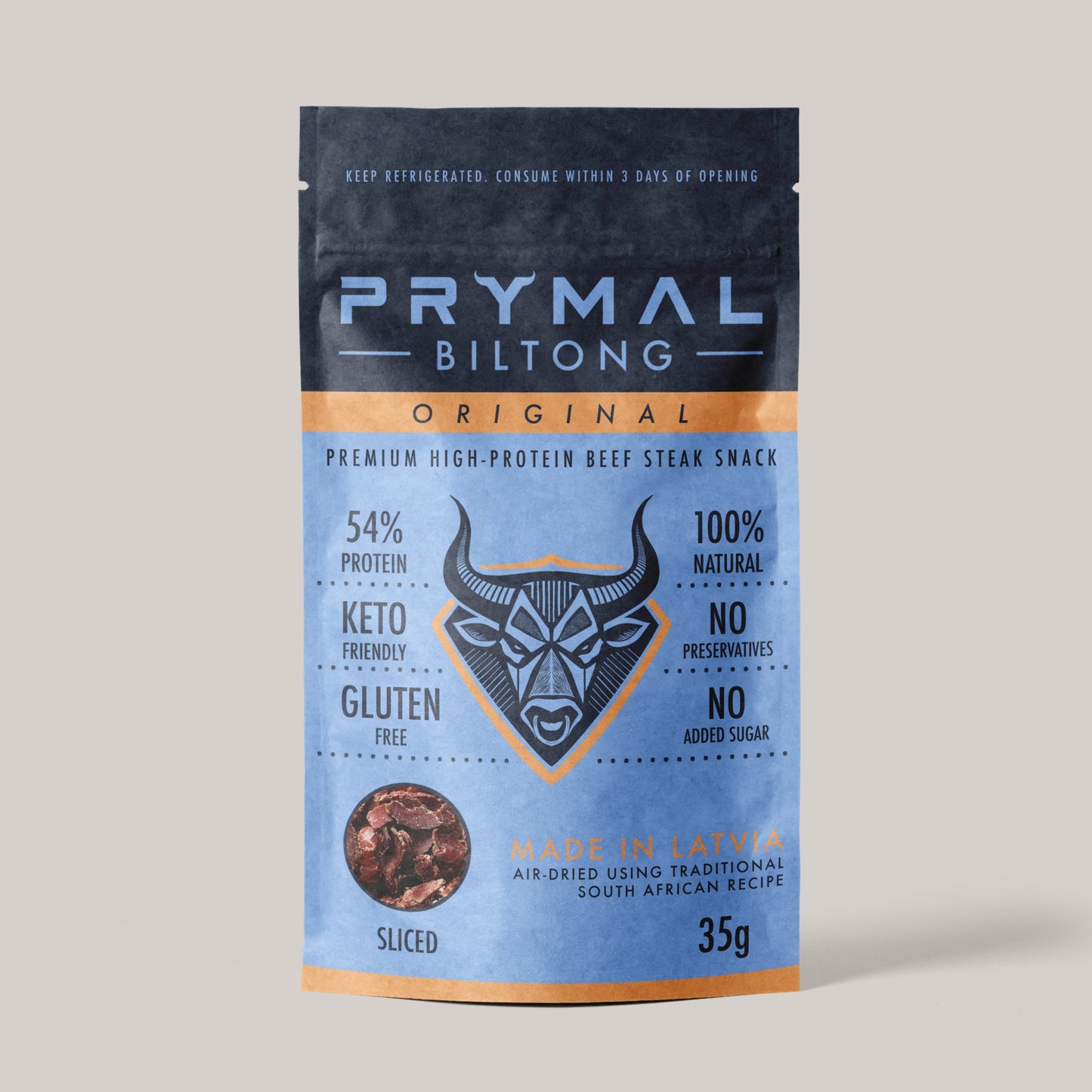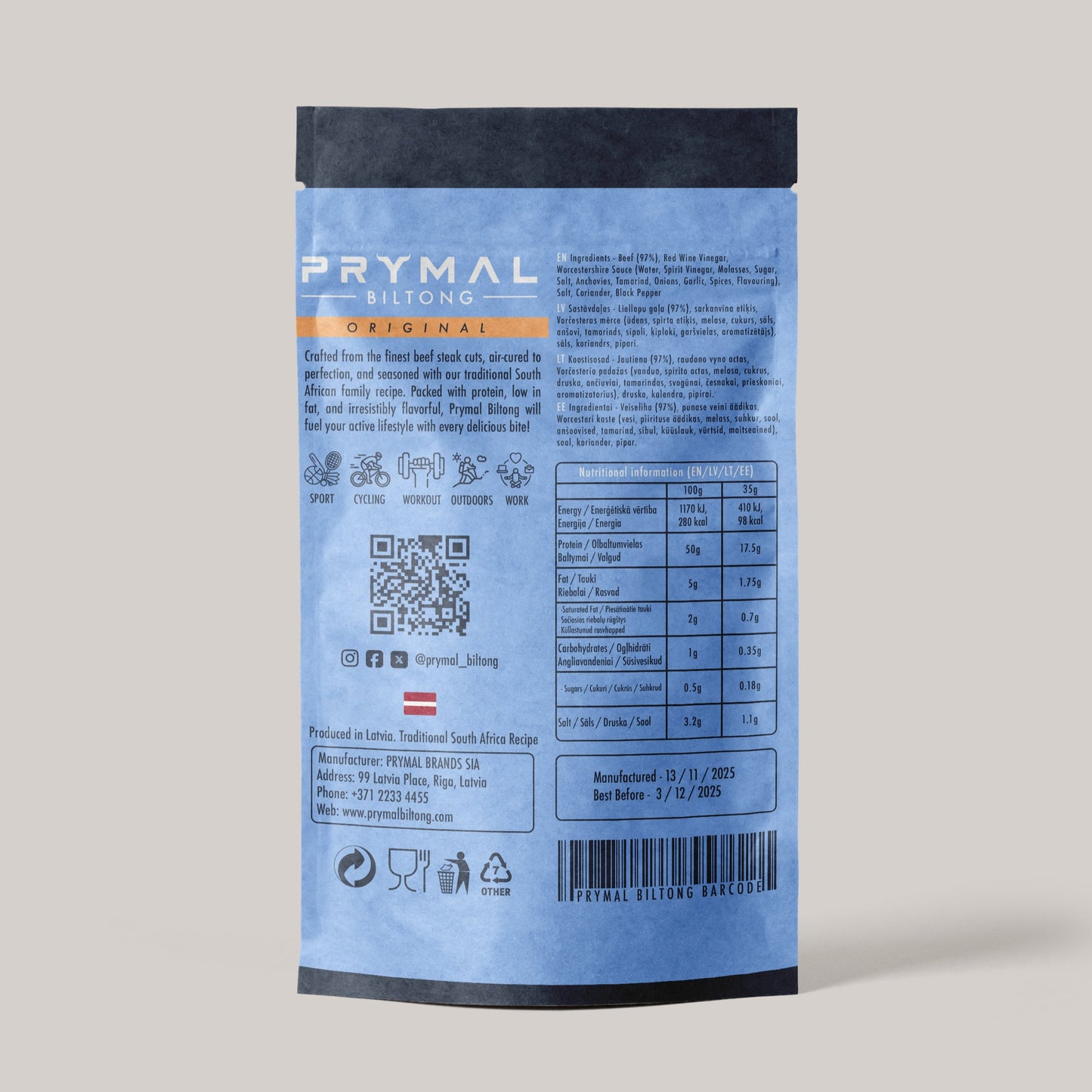What is Biltong?
Share
The Origins of Biltong: A Heritage of Flavor and Function
Biltong may be South Africa’s signature snack, but its story stretches back centuries to Europe.
Long before the invention of refrigeration, communities in the Netherlands, Germany, and surrounding regions used vinegar, salt, and spices to cure strips of meat, which were then air-dried or smoked. This method preserved valuable protein for long winters and voyages.
When Dutch settlers - known as Voortrekkers - began migrating inland from the Cape Colony in the 1600s, they brought these techniques with them. Faced with vast distances, no refrigeration, and the need for food that could survive the journey, they adapted their traditional methods to local conditions. The dry African climate was ideal for air-drying meat, and wild game like kudu and springbok, as well as beef, provided the perfect base. Thus, biltong was born.
The name comes from Dutch: “bil” meaning rump or hindquarter, and “tong” meaning strip or tongue. Originally a survival food, biltong soon became a staple in South African households, evolving into something more than just preserved meat - it became a very special part of the culture.
How Biltong is Enjoyed in South Africa
In South Africa, biltong isn’t just a snack - it’s a ritual, a comfort food, and often a social experience.
It's enjoyed at sports games, family gatherings, on long road trips, and even as part of school lunchboxes.
Every South African has a favorite: sliced thin or thick, fatty or lean, spicy or mild. It’s commonly found in butcher shops, delis, and supermarkets, often sold by weight and sliced fresh to order.
It’s also a source of pride. Many families have their own homemade recipes, passed down through generations, using unique blends of spices and curing techniques. Biltong is shared, debated, and celebrated - an edible expression of tradition and taste.
Biltong and the Rise of Clean Sports Nutrition
In recent years, biltong has found a new global audience - not just for its flavor, but for its function. With growing interest in clean-label, high-protein foods, athletes, gym-goers, and health-conscious consumers are turning to biltong as a natural alternative to ultra-processed protein bars and sugar-laden snacks.
Unlike jerky, which is typically cooked at high heat and often contains added sugars, biltong is slow-cured and air-dried. This preserves its amino acid profile and results in a tender texture without the need for artificial preservatives.
A typical 100g of biltong delivers around 50g of protein, with minimal fat and carbs, making it ideal for muscle recovery, energy on the go, or maintaining satiety throughout a busy day.
Because it's made from whole cuts of beef, biltong offers a complete protein source with all nine essential amino acids - critical for muscle repair, hormone production, and immune function. It's also naturally gluten-free, low in sugar, and portable, making it a smart choice for modern lifestyles that demand both performance and convenience.
The Evolution of a Classic
What began as a survival necessity has become a global wellness staple. Biltong is now enjoyed in gyms, offices, hiking trails, and kitchen cupboards far beyond South Africa’s borders.
As more people seek functional, nutrient-dense foods with minimal processing, biltong stands out - rooted in tradition, perfectly adapted for today.
At PRYMAL, we honour this heritage by crafting biltong the authentic South African way - using pasture-raised beef, time-tested spices, and a slow-curing process that delivers premium protein without compromise. Whether you're fueling your workout, your workday, or your weekend adventures, biltong is more than a snack - it's a delicious and satisfying fuel for life.



